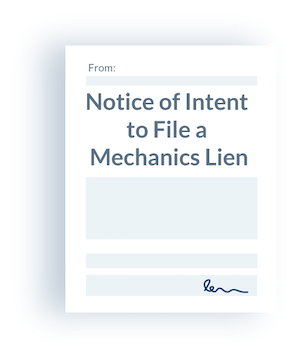
Payment on construction projects can be convoluted (and that’s putting it mildly!)
Even on projects where the property owner made timely, full payments to the GC, there are any number of ways payment can get delayed or funds misappropriated before everyone down the payment chain gets what they have earned. Not only that, but many parties may finish their work well before any progress payment is made, and these companies can grow weary (and suffer significant ramifications to their cash flow) while waiting for payment.
These (and many other) potential payment issues can all lead to mechanics lien being filed against a property, even in cases where the property owner thinks that everything on the project is moving along swimmingly. Given the power of mechanics liens to encumber the property or force an owner to pay twice for the same work – as well as the fact that some payment problems giving rise to a mechanics lien may be unnoticed by the property owner – mechanics liens are (rightly) feared by property owners.
However, receiving a Notice of Intent to Lien (NOI) before a lien is actually filed can be a gift for a property owner. Though this may sound counter-intuitive, read on to see what we mean by this statement.
Receiving a Notice of Intent Means Avoiding the Lien Is Still Possible
The first reaction to the receipt of an NOI may be fear. Liens are powerful and can appear to represent a loss of control over the project and even over the property itself. Especially when all had seemed to be going as planned, a notice that a lien is potentially forthcoming can be quite a shock.
It pays to look at what a notice of intent actually is, though. A notice of intent is just that – a statement that a lien may be filed, not that one has been filed. This means that when you receive a notice of intent, there is still the possibility to avoid the lien entirely.
Receiving an NOI is a benefit, in that: 1) there will be no “hidden lien” of which you had no prior knowledge, and 2) the potential claimant is providing an opportunity to resolve the issue prior to filing a lien.
Stakeholder visibility is important on a project for many reasons, but it’s especially important when it comes payment issues. If the payment issue in unknown, there is nothing you can do to fix it. If it is made visible, though, steps can be taken to make sure the problem (or perceived problem) is resolved timely, appropriately, and without a lien being filed.
So What Do I Do?
The first step is easy: contact the potential lien claimant and get all the information required to make a decision on how to move forward. Clearly, communication is key in resolving the issue presented by a notice of intent to lien. Despite your best efforts and intentions, there has been a payment mishap, or at the very least, the appearance of one. It’s imperative that you find out what the issue is exactly, so you can determine how to move forward to a resolution.
Is there an actual payment issue?
If the claimant is just feeling anxious about getting paid for work performed, but payment is not yet due, then there should be an opportunity to talk with the potential claimant and avoid the dispute. Letting the claimant know that payment is forthcoming pursuant to the contract (whether from you or the GC) may be enough to alleviate the issue and avoid the lien being filed.
If there is a legitimate payment issue.
If the payment issue is legitimate, then it’s either you or a party down the chain holding up payment. If you don’t dispute that an amount is owed, you can contact the potential claimant and attempt to negotiate a payment plan (or just pay the amount due) in order to avoid the lien. If the payment is stuck somewhere down the payment chain, you can either exert pressure on the party holding the money, get the GC to exert that pressure for you, or pay the potential claimant directly (and then recover that money from the non-paying party).
Get with your GC and involve them in the process.
If the potential claimant didn’t contract with you directly, get your GC involved. They will have a better understanding on the payment issue (if any) and which parties have caused the dispute. Furthermore, the GC’s contracts with the subs likely have clauses related to payment timing and other payment aspects. The GCs should have the proximity to find out what is going on and should also have the leverage to put some pressure on getting it taken care of. Therefore, if you’re the property owner, be sure to get your GC involved on any down-stream payment issues ASAP!
Additional Steps
Another simple yet easily overlooked step is to make sure that the potential lien claim is compliant with statutory timing and notice requirements. While unrelated to the underlying payment issue, a lien may be avoided if it is clear that the potential lien will not meet the statutory requirements for the state in which the project is located. In many states, there are specific notice requirements that must be met prior to filing avail mechanics lien, and in all states there are timing requirements for the lien itself. If these rules are not complied with, the lien will be invalid. A communication to that extent, coupled with a promise to look into the underlying payment issue may be enough to avoid the lien being filed.
Avoiding liens on your property is of paramount importance, and receiving an NOI provides the opportunity to do so. Construction parties should think of receiving an NOI as getting an “advance warning,” and it should be looked at as such. Rather than being scared of a notice of intent to lien, use it as the opportunity it is to avoid a lien claim before it happens, and to keep your project running smoothly.



